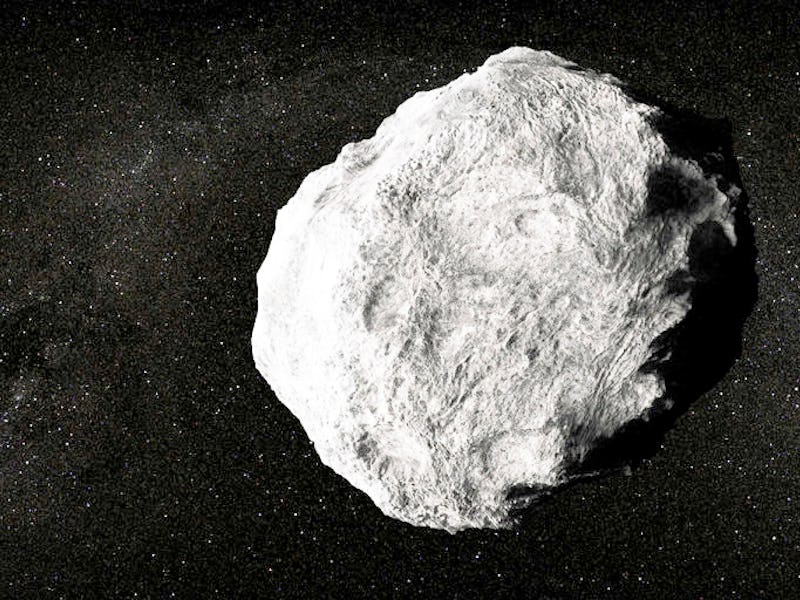How to See the Mountain-Sized Asteroid Florence in the Sky Tonight
All you need a small backyard telescope.

An asteroid the size of 40 football fields stacked end to end will pass very close by Earth today, the largest such asteroid to pass by our planet at such a close distance since NASA began tracking them.
Named Florence, the 2.7-mile wide asteroid will still be 4.4 million miles away from your bed when it comes within view of anybody with a modest backyard telescope. To think of it another way, Flo the Asteroid is 18 times the distance from Earth as the Moon is from Earth.
Here’s another mind boggling stat: While Flo — named after Florence Nightingale, the mother of modern nursing — last was this close to us in 1890, because of its path, it won’t be back around these parts until the year 2500.
The asteroid was only discovered by humans in 1981. Schelte “Bobby” Bus at Siding Spring Observatory in Australia spotted the near-Earth object in March of that year, and back then it was a much further 145 million miles away, but still very bright. It’ll be even brighter tonight.
While it's close, it's not that close.
To see the asteroid Florence in the night sky:
At 11 p.m. Eastern tonight and Friday night, look to the south toward the moon. Then look to the left of the moon and above it. You’ll see the asteroid moving very slowly in an upward motion, just beneath the constellation Delphinus. This graphic put together by the good people at Sky & Telescope magazine should help you connect the dots.
Go outside, y'all.
Of course, an asteroid like this couldn’t pass by Earth with NASA tracking everything about it. The space agency announced earlier this month that its Goldstone Solar System Radar in California would conduct radar imaging of this NEO. Also, the National Science Foundation’s Arecibo Observatory in Puerto Rico will conduct radar imaging. Scientists can learn from radar imaging of NEOs an object’s topography and texture, its dimensions, and other prominent physical features.
A 60-second exposure with a large amateur telescope on August 28, 2017, records asteroid 3122 Florence (bright dot in center).
If it’s raining where you are, or you live in a city with too much light pollution, your friends at SLOOH will fire up a webcast at 9 p.m. Eastern on Thursday.